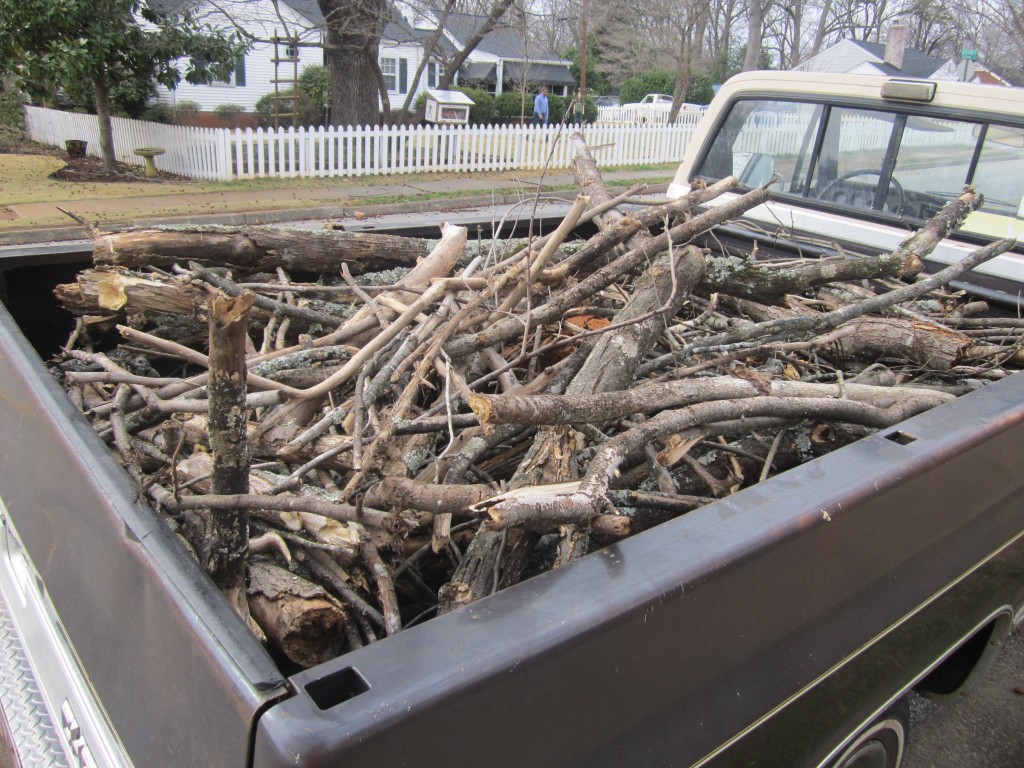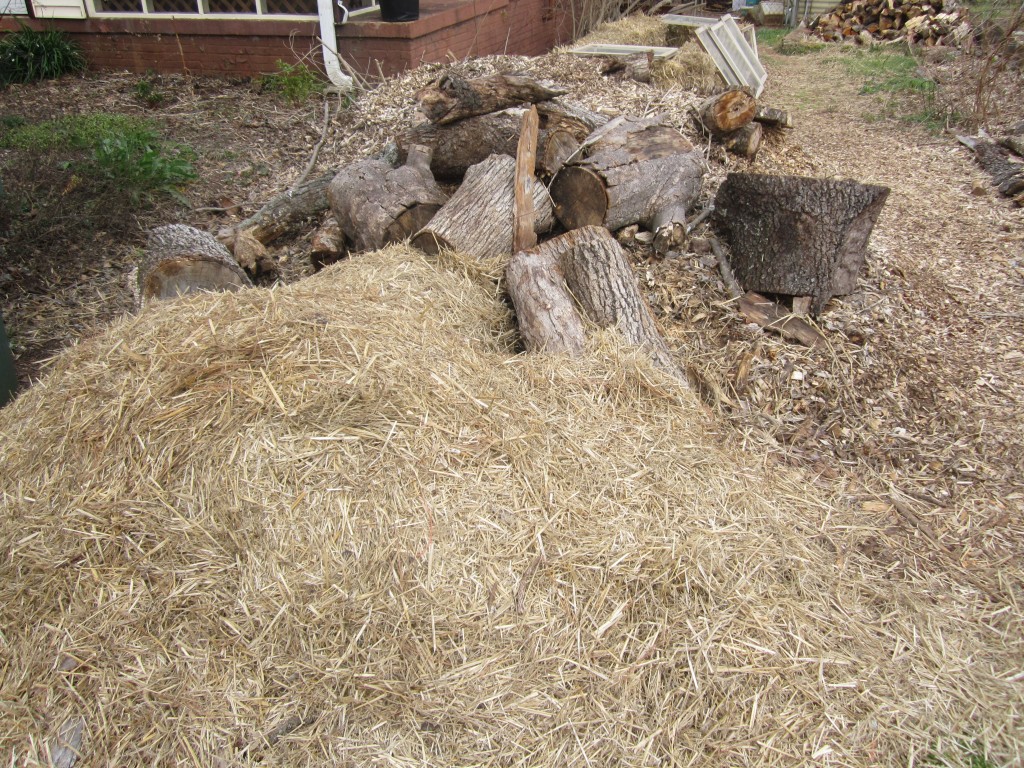How to Value “Free” in Sustainable Lifestyle
This past weekend the weather in our little corner of South Carolina got quite pleasant, reaching up into the mid 70s and all around feeling very spring-ish. It was great. The whole greater Greenville area seemed to decide that with such delightful weather at hand, it was only appropriate to spend some time out of doors. By the end of Saturday, piles of neighborly yard waste could be found lining our street. On Sunday afternoon I took our truck and picked up a ton of that yard waste.

Photo Caption: It only took me about half an hour to fill up the back of our truck with wood that people had piled on the street for pickup. Most of this will in turn be buried in our yard as part of our hugelkultur efforts.
Click the link to keep reading.
To some, yard waste is just that, “waste.” It is matter and material that is no longer desirable. To me, all of that organic matter is ideal material for hugelkultur and composting. Furthermore, as the discards of others’ labors, it was all free.
In our current lifestyle we have found many items and materials that have cost us nothing more than a bit of labor to move it from point A to point B (time is money, sure, but for the projects we like to work on, it doesn’t seem like much). We often arrange to pick-up (or even better, receive a delivery) of leaf and wood mulch. Last weekend, in addition to the straw bales we bought, we gathered up drifts of loose straw that were just going to be tossed (and probably got another two or three bales worth from it). The windows on our cold frame came from a friend. Our chicken coop is repurposed from things like an old laundry room cabinet and leftover house siding. We both regularly collect empty cardboard boxes to use for sheet mulching. It does not take a lot to find the “free” things in this world that can be used for other tasks.

Photo Caption: Cardboard is almost always in abundance, as so much is shipped in boxes made from it. I get cardboard from work, from the local beer and wine store down the street, and from friends.
The idea of “free” can even extend to items that you may have paid for in the first place. We regularly keep large glass jars from things like pickles or olives to be reused in other ways (like for the kimchi I made this weekend). While the cost of the packaging might be included in the initial purchase, more often than not the packaging is discarded once the contents are gone (this is very often the case with cardboard, too). Our friend Jim dropped off four five-gallon food grade pickle buckets the other day, which I intend to turn into sub-irrigating planters. It is an interesting comment about our consumerist society that we deem so many usable materials as waste. In fact, at times, we even regulate the trait of “thriftiness” as a negative, when in reality it should be seen as being conscious of available resources.

Photo caption: These piles of straw, wood, and wood mulch, were all “free” in that we did not personally spend money on them. We’ll use them for a variety of things like mulching beds, building borders, and filling parts of our chicken run.
Free can be found outside of the manufactured human realm too. When I go mushroom foraging or gather up a bunch of fallen black walnuts, once again, I am not paying anything besides a bit of my personal time (and as these activities are ones I really enjoy, I don’t usually notice the cost). I think that we often forget that, at one time, this was a major method of human survival — gathering that which nature simply made available.
But what else? I remember, growing up, getting so tired of rain all summer long (Vermont has very cloudy and wet summers in general), but now, as a grower, I greatly look forward to rain because that is a free irrigation day for my plants. In younger days I would have scoffed at something like chicken poop, but now, I value it as free fertilizer. Even the dirt in the yard is a resource; while the property is paid for, so many of us overlook the very soil we supposedly “own” when tending it a bit more can provide free services like a lower-maintenance healthy garden.

Photo Caption: Family members gave us the used laundry room cabinet, excess house siding, roofing, and a good bit of the lumber on our chicken coop.
A big part of sustainability is working to transcend some of the blind consumerist mindset — the drive to always acquire more, use more, own more. At its heart, sustainability is using things to the extent of their worth, and, when their immediate usefulness has finally passed, finding ways to inter their remains with respect so they continue in the world’s cycle rather than just becoming “waste.” I like to think of a healthy forest when I think of sustainability. The forest doesn’t think of things in terms of waste, it simply reincorporates all the pieces that pass through. Plus, in that sustainable cycle the concept of “free” or “not free” becomes kind of redundant, because where was the ownership in the first place?
So here’s a challenge we can all try to do a bit each week. What things in our lives have we each taken for granted as being “waste” and how can we rethink them into “free” things that can be used in other ways? I think, when we put our mind to it, we almost always come up with a solution.
~Nathaniel
2 thoughts on “How to Value “Free” in Sustainable Lifestyle”
Comments are closed.

tj in maine - March 20, 2013 8:46 am
I agree with you wholeheartedly! I have trouble keeping my collecting in check! “Use it till it’s used UP!”
Janet, The Queen of Seaford - April 2, 2013 10:44 am
One of the Master Gardeners in our group did an article about hugelkultur, loved your photos showing it getting built.
Janet, The Queen of Seaford´s last blog post ..Garden Bloggers are The Best